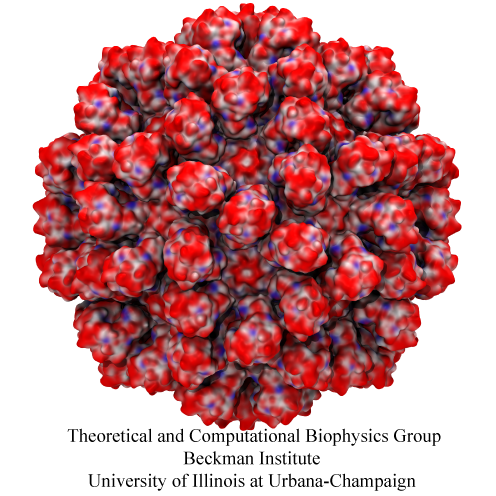Highlights of our Work
2024 | 2023 | 2022 | 2021 | 2020 | 2019 | 2018 | 2017 | 2016 | 2015 | 2014 | 2013 | 2012 | 2011 | 2010 | 2009 | 2008 | 2007 | 2006 | 2005 | 2004 | 2003 | 2002 | 2001
Rabbit hemorrhagic disease is extremely contagious and associated with liver necrosis,
hemorrhaging, and high mortality in adult rabbits. First described in China in 1984, within a few years,
rabbit hemorrhagic disease spread to large parts of the world and today threatens the rabbit industry and related ecology.
The disease is caused by a virus, aptly named rabbit hemorrhagic disease virus.
As reported recently,
a group of experimental and computational researchers combining crystallography, electron microscopy and
data-guided molecular dynamics simulations utilizing
NAMD determined an atomic model of the capsid,
namely the protein shell that surrounds the genetic material of the virus.
The capsid simulations involved 10 million atoms and have become feasible only through
Blue Waters, a brand new petascale supercomputer.
The atomic model, analyzed by means of VMD,
recently adapted to studies of very large structures,
resolves the structural framework that furnishes both mechanical protection to the viral genes
as well as a quick release mechanism after a virus enters a host cell.
Researchers can use the detailed knowledge of the capsid structure to develop vaccines against rabbit hemorrhagic disease.
More information is available on our virus website
and in a news story.




